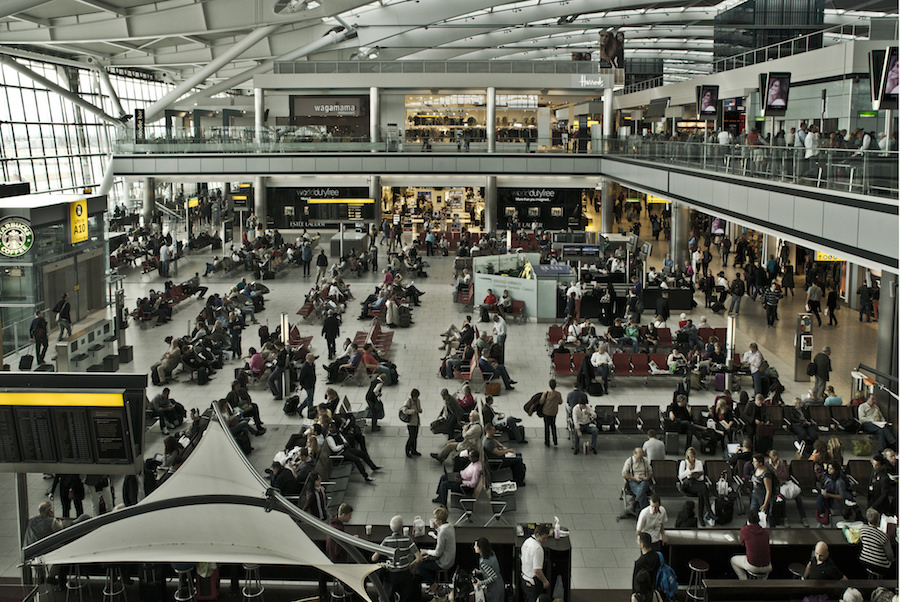
 In January, the State Department revamped its system of travel advisories, making it easier for American citizens to know what dangers await abroad. The updated model uses a tiered ranking system to designate the safest and most dangerous countries in the world for Americans to visit. There are four levels, with the first level advising would-be travelers to “exercise normal precautions,” and the fourth level bluntly warning “do not travel.”
In January, the State Department revamped its system of travel advisories, making it easier for American citizens to know what dangers await abroad. The updated model uses a tiered ranking system to designate the safest and most dangerous countries in the world for Americans to visit. There are four levels, with the first level advising would-be travelers to “exercise normal precautions,” and the fourth level bluntly warning “do not travel.”
Russia was placed at Level 3, which urges Americans to “reconsider travel” if we are unlucky enough (or apparently stupid enough) to think about going. It’s a decision that reflects political nitpicking rather than common sense realities.
By itself, the State Department’s ranking system doesn’t do much from a practical standpoint. Our government doesn’t strictly prohibit tourism in any country with the exception of Cuba and North Korea, although this might change given recent diplomatic efforts. We can generally go where we want, when we want, notwithstanding other nations and their own entry requirements.
Still, the rankings have the potential to do more harm than good, especially for countries that run afoul of popular media. By the State Department’s own admission, the very first step for potential travelers should be to look at its list of travel advisories. When the perception of danger is higher than what reality suggests, travel is considered more burdensome than necessary, and misinformation about the world persists.
Following Donald Trump’s ascension to the presidency, a foreign policy that was once firmly against Russia’s international aggression is now an unbalanced shell of its former self. Our credibility on the Russia issue has eroded. One minute, President Trump denies election hacking and trolling, of the type started in unremarkable St. Petersburg suburbs. The next, cruise missiles strike targets in Syria, risking a genuine conflict with Russia in a volatile region.
Our inconsistent policies have only been inflamed by placing Russia at a level three, and with it comes skewed points of view. Here are some other countries placed at the same level:
The Democratic Republic of Congo, where a history of ethnic conflict and mineral plundering has created millions of refugees and internally displaced persons, continuing to this day;
Venezuela, which is embroiled in economic and humanitarian crises ranging from severe food shortages to violent crackdowns that have also prompted a mass migratory response;
El Salvador, home to the world’s highest murder rate.
Like every other country, Russia has its own issues — corruption, a flagging economy and crackdowns on independent journalism and protest. But they do not warrant the safety judgments that a list recommending to “reconsider travel” warrants. There is no exodus of refugees or mass casualty events stemming from ethnic struggles.
The State Department cites terrorism and harassment of Americans as reasons for Russia’s inclusion on level three. Of the two, terrorism is easier to quantify. In a report by the Global Terrorism Index published in 2017, Russia’s GTI score — a composite figure measuring the impact of terrorism within a country’s borders, with higher scores indicating more risk from terrorist incidents — was 5.3 out of a possible 10. The United States placed at a 5.4.
Despite apparent precursors to anti-American sentiment — consulate closings, sanctions, more belligerent military action — I’ve found nothing but friendliness towards Americans while living in Russia, and other study abroad students will agree. I’ve been offered drinks and a toast by rowdy soccer fans after some amusing banter over our recent missile strikes in Syria. Americans here garner curiosity, not harassment. Living here has revealed not the worst side of Russia, as our government would have us believe is the unyielding truth, but the best.
With tensions between the American and Russian governments playing a risky game of red light-green light, it’s easy to forget that people actually exist beneath the highest echelons of power and the war of words that dominate our public perceptions of each other.
That’s why the State Department’s decision to place Russia so high on its advisory list is so backwards — it reflects conditions at the top, the clash of politicians at odds over long-term policy goals, rather than conditions for actual people (and travelers) living in reality. The world will be better off without such delusions of danger.
Written by: Nick Irvin — ntirvin@ucdavis.edu
Disclaimer: The views and opinions expressed by individual columnists belong to the columnists alone and do not necessarily indicate the views and opinions held by The California Aggie.




